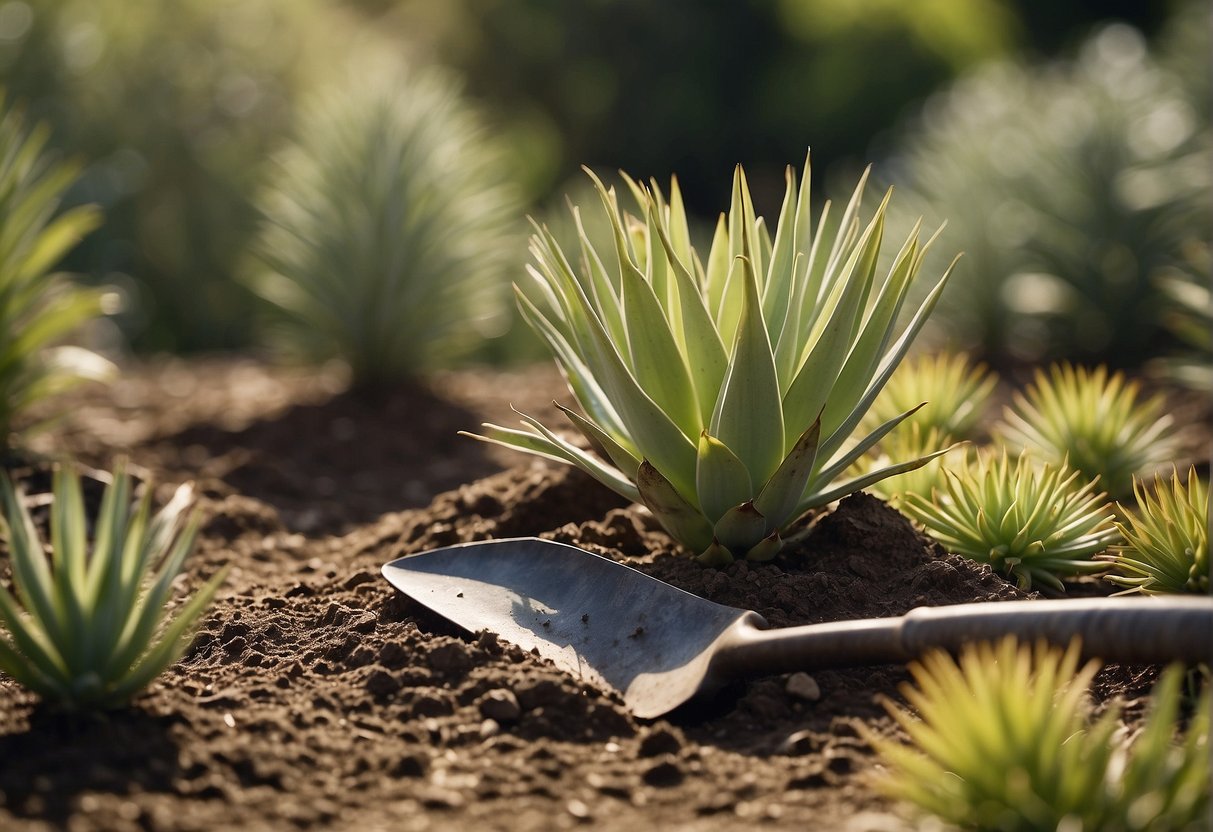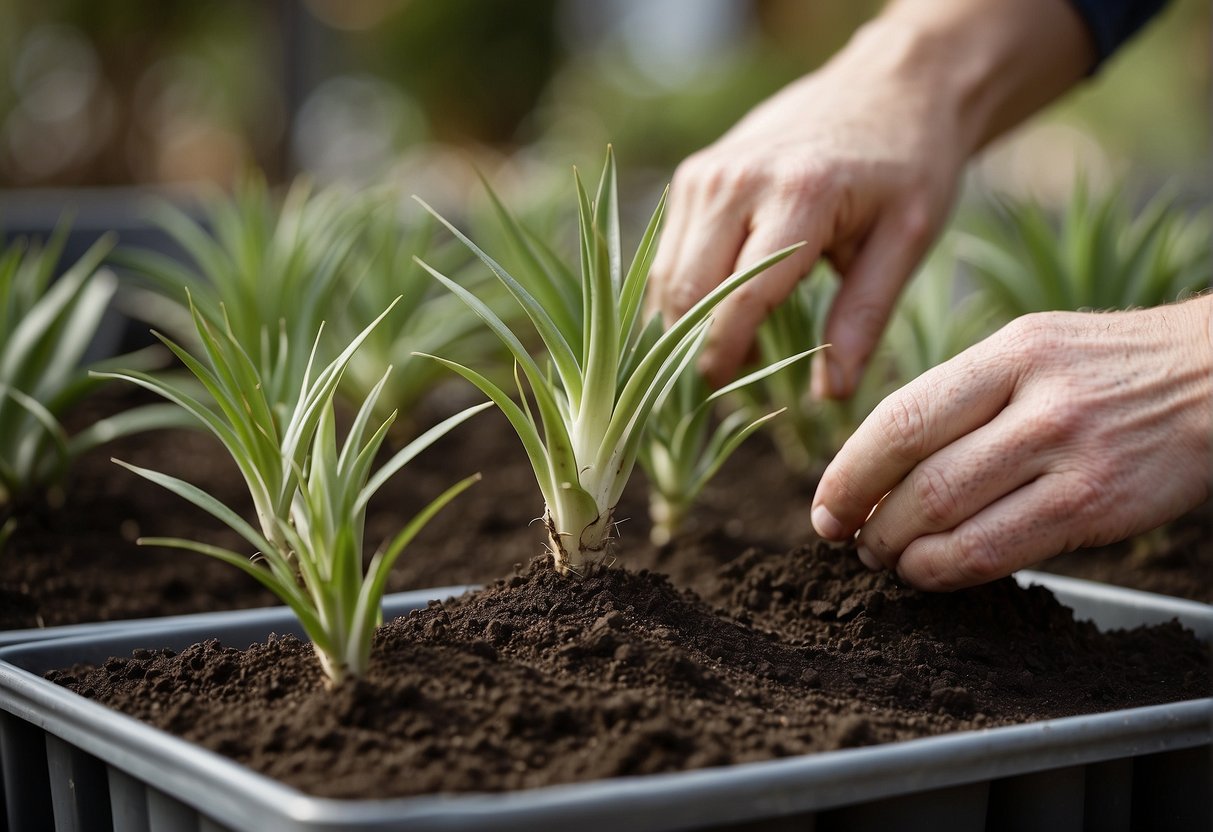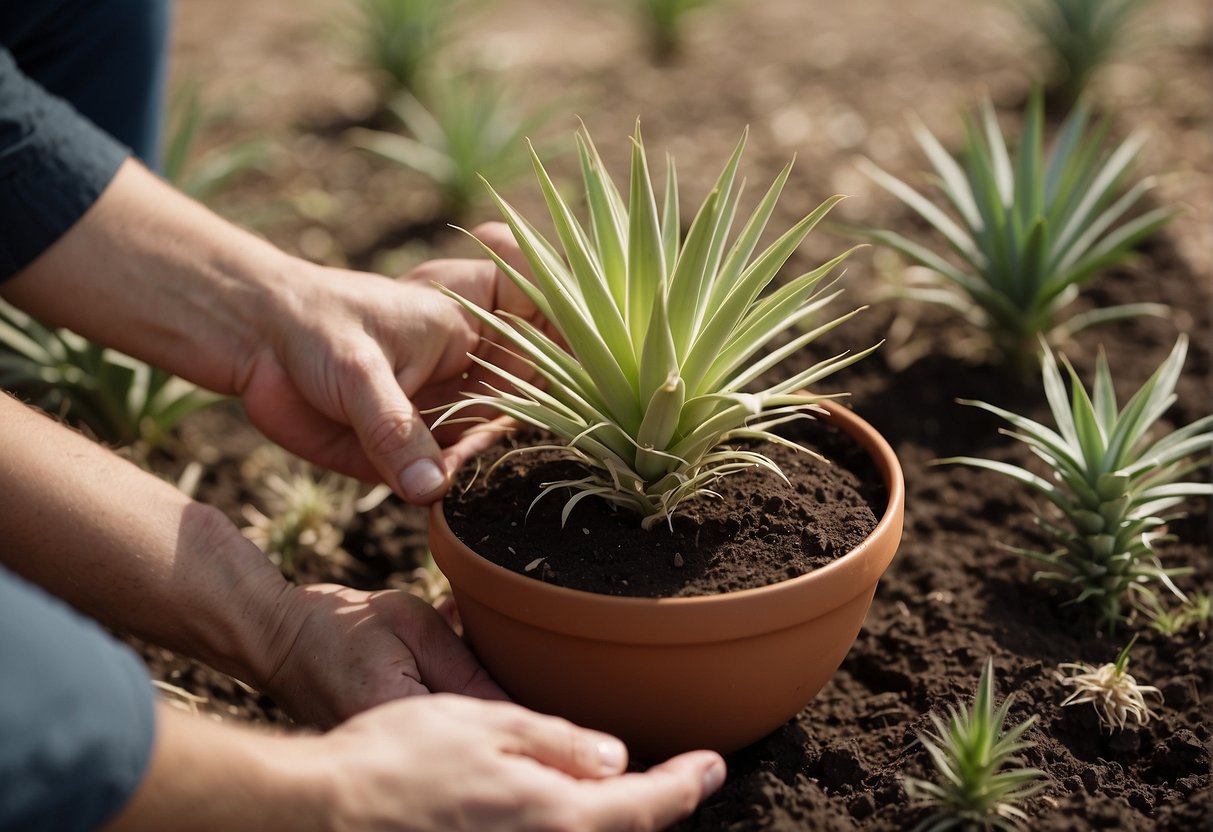When is a Good Time to Transplant Yucca Plants: Expert Advice
Moving yucca plants to a new location can be challenging, yet it’s essential for their development and longevity. It’s vital to recognize the optimal timing for transplanting yucca plants to guarantee they thrive after relocation. In this guide, we’ll explore the ideal period for relocating yucca plants, the steps involved in the transplanting process, and address some common questions regarding the procedure.

Understanding the Best Time to Transplant Yucca is key to ensuring the success of the transplant. The best time to transplant yucca plants is in the spring or fall when the temperatures are mild and the plant is not in active growth. Transplanting during extreme temperatures can cause shock to the plant, making it difficult for it to recover. It is also important to wait until the plant is mature enough to handle the stress of transplanting, which is typically after two to three years of growth.
Executing the Transplant is a delicate process that requires careful attention to detail. It is important to prepare the new location before digging up the yucca plant. The new location should have well-draining soil and receive the appropriate amount of sunlight for the specific species of yucca plant. When digging up the plant, it is important to take as much of the root system as possible to minimize shock. Once the plant is in its new location, it should be watered thoroughly and monitored closely for the first few weeks to ensure it is adjusting well.
Key Takeaways
- The best time to transplant yucca plants is in the spring or fall when temperatures are mild and the plant is mature enough to handle the stress.
- When executing the transplant, it is important to prepare the new location and take as much of the root system as possible to minimize shock.
- Yucca plants should be monitored closely for the first few weeks after transplanting to ensure they are adjusting well.
Understanding the Best Time to Transplant Yucca
If you are looking to transplant your yucca plant, timing is crucial for a successful transplant. Here are some seasonal considerations and plant growth cycles to keep in mind.
Seasonal Considerations
The best time to transplant yucca plants is during the spring or fall. During these seasons, the weather is mild, and the plant is less likely to experience transplant shock. In the spring, the plant is coming out of dormancy and is beginning to grow, making it an ideal time to transplant. In the fall, the plant is preparing for dormancy, and transplanting it before it goes dormant will give it time to establish its root system before winter.
If you live in an area with mild winters, you may also be able to transplant yucca plants during the winter months. However, it is important to ensure that the ground is not frozen, and the weather is not too harsh.
Plant Growth Cycles
Understanding the growth cycles of yucca plants can also help you determine the best time to transplant. Yucca plants grow in a rosette shape, with new leaves growing from the center of the plant. As the plant grows, it produces a root system that is essential for its survival.
When transplanting a yucca plant, it is important to avoid disturbing the roots as much as possible. Transplanting during the plant’s dormant period, when it is not actively growing, can help minimize the risk of transplant shock.
In summary, the best time to transplant yucca plants is during the spring or fall, when the weather is mild and the plant is less likely to experience transplant shock. Understanding the plant’s growth cycles and transplanting during its dormant period can also help ensure a successful transplant.
Executing the Transplant

Transplanting yucca plants can be a bit tricky, but with proper preparation and care, your yucca will thrive in its new location. Here are some tips for executing a successful transplant.
Preparing the Yucca for Transplant
Before you begin the transplant process, make sure your yucca plant is healthy and well-watered. It’s best to transplant in the early spring, before the plant begins actively growing. If your yucca is in a container, gently remove it from the pot and loosen the root ball with your fingers. If your yucca is in a garden, use a shovel to dig around the base of the plant, being careful not to damage the roots.
Selecting the Right Location and Soil
When selecting a new location for your yucca, choose a spot that receives plenty of sunlight and has well-draining soil. Yuccas prefer soil with a slightly acidic to neutral pH level. If the soil in your new location is not ideal, you can amend it with organic matter such as compost or potting soil.
Post-Transplant Care
After transplanting your yucca, water it thoroughly to help settle the soil around the roots. Be sure to keep the soil moist, but not waterlogged, for the first few weeks after transplanting. Yuccas also benefit from regular fertilization, especially during their active growing season. You can use a balanced fertilizer or one specifically formulated for yuccas. Additionally, adding a layer of organic mulch around the base of the plant can help retain soil moisture and regulate temperature.
It’s important to note that yuccas may need time to acclimate to their new environment. During this time, it’s important to monitor their growth and make adjustments as needed. With proper care and attention, your transplanted yucca will flourish in its new home.
Frequently Asked Questions

What is the ideal season for transplanting yucca plants?
The best time to transplant yucca plants is during the spring or fall when the temperatures are mild. This will give the plant enough time to establish its roots before the extreme temperatures of summer or winter arrive. Avoid transplanting during the hot summer months or during the cold winter months.
How do I properly care for a yucca plant after transplanting?
After transplanting, it is important to keep the soil moist but not waterlogged. Water the plant deeply once a week, and make sure the soil drains well. Avoid fertilizing the plant for the first few months after transplanting. Once the plant has established itself, you can begin to fertilize it as needed.
What are the signs of transplant shock in yucca plants?
Transplant shock can cause the leaves of the plant to turn yellow or brown, and the plant may appear wilted or droopy. The plant may also stop growing for a period of time. To avoid transplant shock, make sure to water the plant thoroughly after transplanting and avoid disturbing the roots as much as possible.
How should yucca cuttings be prepared for successful planting?
To prepare yucca cuttings for planting, remove the lower leaves of the cutting and allow the cut end to dry for a few days. Once the cut end has calloused over, plant the cutting in a well-draining soil mix and water it lightly. Place the cutting in a warm, bright location, but avoid direct sunlight.
Can yucca plants be divided for propagation, and if so, how?
Yes, yucca plants can be divided for propagation. To divide a yucca plant, carefully remove it from its container and gently separate the root ball into smaller sections. Each section should have a few leaves and a healthy root system. Plant each section in a well-draining soil mix and water lightly.
What are the best conditions for planting yucca cuttings?
Yucca cuttings should be planted in a well-draining soil mix and watered lightly. They should be placed in a warm, bright location but avoid direct sunlight. Yucca cuttings can take several weeks to root, so be patient and avoid disturbing the cutting during this time.


